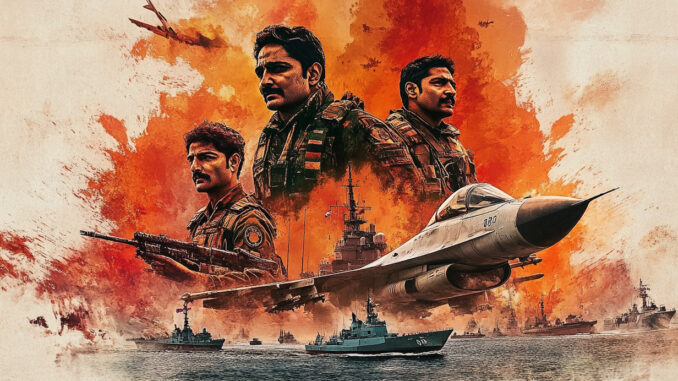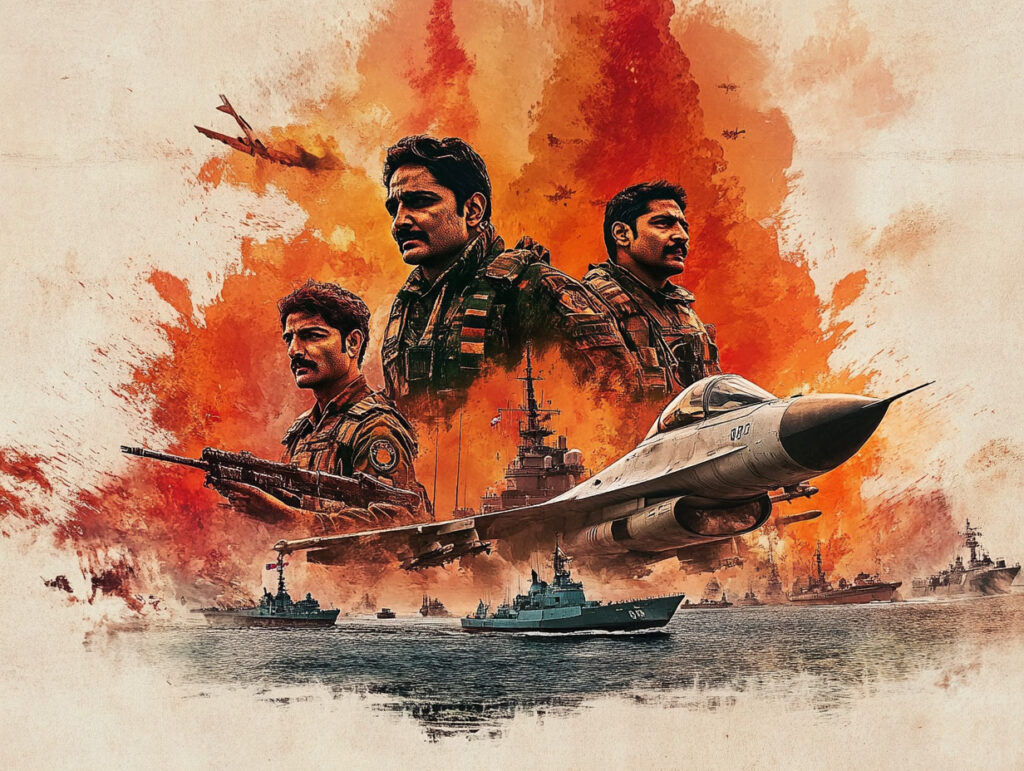
A detailed analysis of the Indian Army, its different branches, strategies, politico-strategic situation and armament requirements.
The Indian Army is one of the largest and most powerful armed forces in the world. It comprises the army, navy and air force, each of which has specific capabilities and a crucial role in national defence. India’s geopolitical situation demands constant vigilance and a well-defined military strategy, particularly in the face of the challenges posed by its neighbours. This article explores in depth the strengths of each corps, the strategies adopted, the politico-strategic situation and the armament requirements to understand the scope of the Indian military force.
The Indian Army
The Indian Army is one of the pillars of national defence, with around 1.2 million active soldiers and 960,000 reservists. It is structured into several regional commands, each with a specific defence and security mission.
Manpower and equipment:
The army is equipped with more than 3,500 main battle tanks, including the T-90 and Arjun, as well as 1,900 armoured personnel carriers. It also has around 10,000 artillery pieces, including field guns, self-propelled howitzers and heavy mortars.
Strategies and deployments:
The Indian Army’s strategies focus primarily on deterrence and defence. Sensitive border areas with Pakistan and China, particularly along the Line of Control and the current Line of Control, are heavily militarised. Military doctrines such as “Cold Start” are designed to enable a rapid and effective response in the event of limited conflict.
Concrete examples:
For example, during the 2020 tensions with China in the Ladakh region, the army rapidly deployed additional troops and heavy equipment to counter opposing movements. This capacity for rapid mobilisation demonstrated the effectiveness of their defence strategy.
The Indian Navy
The Indian Navy plays a crucial role in protecting India’s maritime interests, covering an exclusive economic zone of 2.4 million square kilometres and a coastline of 7,500 kilometres.
Manpower and equipment:
With around 67,000 sailors, the Indian Navy has more than 150 ships, including aircraft carriers, destroyers, frigates, corvettes and submarines. The aircraft carriers INS Vikramaditya and INS Vikrant are key elements of the navy’s projection force.
Strategies and operations:
India’s maritime strategy focuses on monitoring and securing crucial sea lanes, such as the Straits of Malacca. The Navy is also involved in anti-piracy operations in the Gulf of Aden and humanitarian missions in South Asia.
Concrete examples:
During cyclone Amphan in 2020, the Indian Navy deployed several ships for relief and rescue operations, demonstrating its ability to respond rapidly to humanitarian crises.
The Indian Air Force
The Indian Air Force is the fourth largest air force in the world, with around 140,000 active personnel and more than 1,700 aircraft.
Manpower and equipment:
It has a diversified fleet comprising multi-role fighters such as the Sukhoi Su-30MKI, Mirage 2000 and the recent Rafale, as well as transport aircraft, helicopters and surveillance drones. It is also equipped with sophisticated air defence systems such as the S-400.
Strategies and capabilities:
Air strategies focus on air superiority, reconnaissance and support for ground forces. Regular air exercises, such as Operation Gagan Shakti, aim to maintain optimum readiness and rapid deployment capability.
Concrete examples:
During the Balakot attack in 2019, the Air Force carried out precise strikes against terrorist camps in Pakistan, demonstrating its power projection and pre-emptive strike capabilities.

India’s politico-strategic position
India’s geopolitical position is marked by its complex relations with its immediate neighbours, mainly China and Pakistan.
Border conflicts:
Tensions with China along the Line of Actual Control (LAC) and recurrent clashes with Pakistan along the Line of Control (LoC) require constant military preparedness and a robust deterrence strategy.
Strategic partnerships:
India has strengthened its partnerships with global powers such as the United States, Russia and France to modernise its armed forces. These alliances are crucial for acquiring cutting-edge technologies and conducting joint military exercises.
Concrete examples:
The military logistics agreement with the United States, signed in 2016, enables the Indian and US armed forces to use each other’s bases for resupply and maintenance operations, thereby strengthening strategic cooperation.
Armaments and modernisation requirements
To maintain its strategic position and respond to emerging threats, India has identified several key areas for the modernisation of its armed forces.
Investment and procurement:
India plans to invest around €130 billion in modernising its armed forces by 2025. This includes the purchase of new combat aircraft, air defence systems, submarines and armoured vehicles.
Indigenous development:
In addition to international procurement, India is focusing on indigenous development of defence technologies, with programmes such as “Make in India”. Projects such as the Tejas fighter and the Agni-V missile are examples of this initiative.
Concrete examples:
The acquisition of S-400 air defence systems from Russia and the local manufacture of the Tejas light fighter illustrate the balance between international purchases and national development.
Strategic and economic consequences
India’s strategic decisions and military investments have significant regional and economic repercussions.
Regional impact:
Strengthening India’s military capabilities deters potential adversaries and stabilises the region. Military partnerships and joint exercises also strengthen cooperation with other world powers.
Economic consequences:
Massive military spending contributes to the economy through job creation and the development of the national defence industry. However, it can also put pressure on public finances, requiring rigorous budget management.
Concrete examples:
The growth of the defence industry under the “Make in India” programme has attracted foreign investment and stimulated local technological innovation, while strengthening national security.
Future prospects
The Indian Army continues to play a crucial role in the protection and stability of the nation. Continued investment in modernisation, combined with robust defence strategies and international partnerships, ensures that India remains ready to meet future challenges. The emphasis on indigenous development and international cooperation puts India in a strong position to maintain peace and security in the region.
War Wings Daily is an independant magazine.